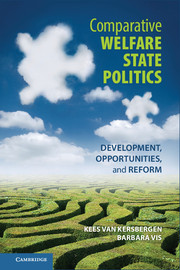Book contents
- Frontmatter
- Contents
- List of Tables and Figures
- Preface and Acknowledgments
- 1 Introduction
- 2 The Welfare State
- 3 The Logics of the Welfare State
- 4 Welfare State Regimes
- 5 What Do Welfare States Actually Do?
- 6 Toward an Open Functional Approach to Welfare State Reform
- 7 Why Do We Need to Reform the Welfare State?
- 8 Why Do We Need to Reform the Welfare State?
- 9 Why and How Do Politicians and Governments Pursue Risky Reforms?
- 10 Can and Will the Welfare State Survive the Great Recession?
- References
- Index
- References
References
Published online by Cambridge University Press: 05 June 2014
- Frontmatter
- Contents
- List of Tables and Figures
- Preface and Acknowledgments
- 1 Introduction
- 2 The Welfare State
- 3 The Logics of the Welfare State
- 4 Welfare State Regimes
- 5 What Do Welfare States Actually Do?
- 6 Toward an Open Functional Approach to Welfare State Reform
- 7 Why Do We Need to Reform the Welfare State?
- 8 Why Do We Need to Reform the Welfare State?
- 9 Why and How Do Politicians and Governments Pursue Risky Reforms?
- 10 Can and Will the Welfare State Survive the Great Recession?
- References
- Index
- References
- Type
- Chapter
- Information
- Comparative Welfare State PoliticsDevelopment, Opportunities, and Reform, pp. 207 - 240Publisher: Cambridge University PressPrint publication year: 2013

